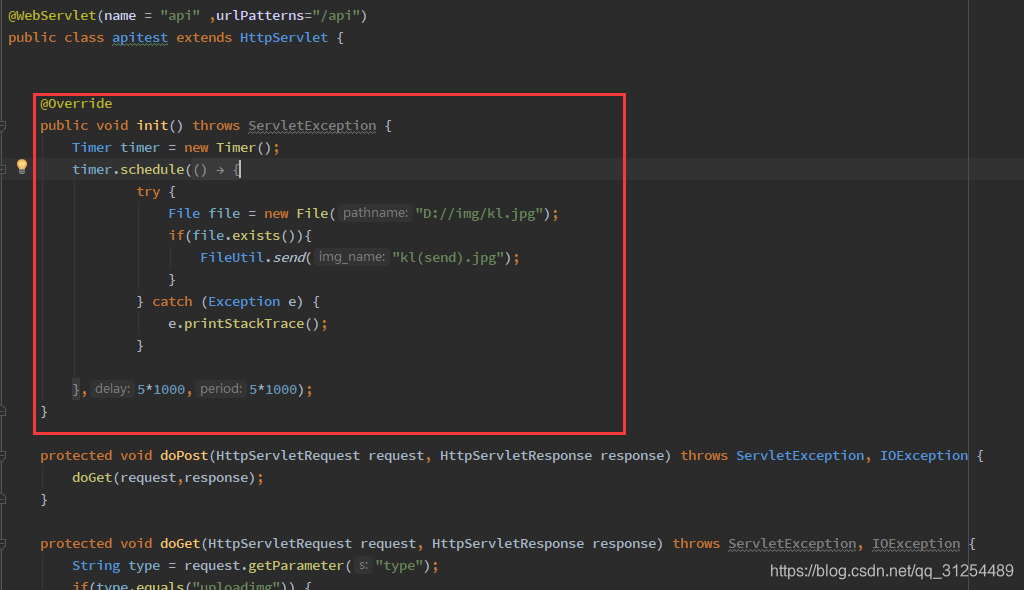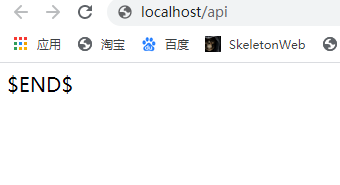Tabla de contenido
Grabe una pequeña demostración donde el código local de Java pasa la codificación base64 de la imagen al servidor a través de httpclient, y luego el servidor almacena la imagen.
Código de cliente local:
Obtener codificación base64 de imágenes
// 将图片文件转化为字节数组字符串,并对其进行Base64编码处理
public static String getImageBase64(String imgFilePath) {
byte[] data = null;
// 读取图片字节数组
try {
InputStream in = new FileInputStream(imgFilePath);
data = new byte[in.available()];
in.read(data);
in.close();
} catch (IOException e) {
e.printStackTrace();
}
// 对字节数组Base64编码
BASE64Encoder encoder = new BASE64Encoder();
return encoder.encode(data);// 返回Base64编码过的字节数组字符串
}
Utilice httpclient para ejecutar la publicación
Introduzca el paquete httpclient en maven
<dependency>
<groupId>org.apache.httpcomponents</groupId>
<artifactId>httpclient</artifactId>
<version>4.5.2</version>
</dependency>
<dependency>
<groupId>org.apache.httpcomponents</groupId>
<artifactId>httpcore</artifactId>
<version>4.4.6</version>
</dependency>
public static void HttpClientPost(String url,List<NameValuePair> list) throws Exception {
// 获取默认的请求客户端
CloseableHttpClient client = HttpClients.createDefault();
// 通过HttpPost来发送post请求
HttpPost httpPost = new HttpPost(url);
// 我们发现Entity是一个接口,所以只能找实现类,发现实现类又需要一个集合,集合的泛型是NameValuePair类型
UrlEncodedFormEntity formEntity = new UrlEncodedFormEntity(list);
// 通过setEntity 将我们的entity对象传递过去
httpPost.setEntity(formEntity);
// 通过client来执行请求,
CloseableHttpResponse response = client.execute(httpPost);
//下面是获取响应
// HttpEntity entity = response.getEntity();
// String str = EntityUtils.toString(entity, "UTF-8");
// System.out.println(str);
response.close();
}
Al final. Defina el método y llame a httpost. Luego especifique 3 parámetros, 1 dirección de acceso
- tipo tipo de acceso
- nombre de archivo nombre de archivo personalizado
- codificación base64str
- http: // dirección de acceso localhost / api
public static void send(){
System.out.println("发送图片请求");
// post带参数
List<NameValuePair> list = new ArrayList<NameValuePair>();
BasicNameValuePair b = new BasicNameValuePair("type", "uploadimg");
BasicNameValuePair b2 = new BasicNameValuePair("filename", "kl.jpg");
BasicNameValuePair b3 = new BasicNameValuePair("base64str", getImageBase64("C:\\Users\\ASUS\\Desktop\\kl.jpg"));
list.add(b);
list.add(b2);
list.add(b3);
try {
HttpClientPost("http://localhost/api",list);
} catch (Exception e) {
e.printStackTrace();
}
}
Código del servidor:
Obtenga los parámetros en requst y luego guarde la imagen

@WebServlet(name = "api" ,urlPatterns="/api")
public class apitest extends HttpServlet {
protected void doPost(HttpServletRequest request, HttpServletResponse response) throws ServletException, IOException {
doGet(request,response);
}
protected void doGet(HttpServletRequest request, HttpServletResponse response) throws ServletException, IOException {
String type = request.getParameter("type");
if(type!=null &&type.equals("uploadimg")) {
String filename = request.getParameter("filename");
String base64str = request.getParameter("base64str");
saveImg("D://img/"+filename,base64str);
}
}
public void saveImg(String url,String base64_Str){
BASE64Decoder decoder = new BASE64Decoder();
try {
// Base64解码
byte[] bytes = decoder.decodeBuffer(base64_Str);
for (int i = 0; i < bytes.length; ++i) {
if (bytes[i] < 0) {
// 调整异常数据
bytes[i] += 256;
}
}
// 生成图片
OutputStream outs = new FileOutputStream(url);
outs.write(bytes);
outs.flush();
outs.close();
} catch (Exception e) {
e.printStackTrace();
}
}
}
Luego usamos tomcat para probarlo localmente.
Anula el método init del servelet. Inicie el temporizador y detecte si existe el archivo D: //img/kl.jpg, luego el servidor enviará el archivo a D: // img / kl (enviar) .jpg

Timer timer = new Timer();
timer.schedule(new TimerTask() {
@Override
public void run() {
try {
File file = new File("D://img/kl.jpg");
if(file.exists()){
FileUtil.send("kl(send).jpg");
}
} catch (Exception e) {
e.printStackTrace();
}
}
},5*1000,5*1000);
ok, inicie Tomcat, luego visite / api, luego severlet ejecuta el método init para iniciar el temporizador

. . . Después de 5 segundos, ya está.
